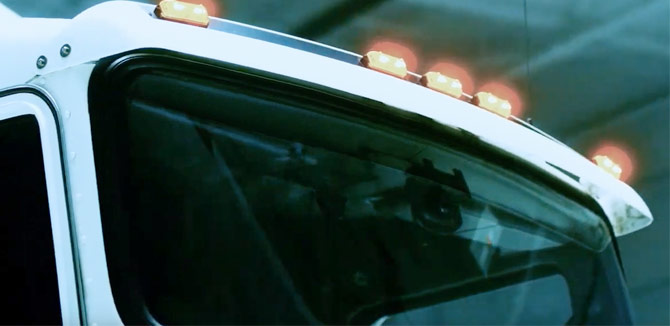The National Transportation Safety Board (NTSB) has touted the life-saving benefits of video event recorders for years, even placing them on its Most Wanted List of top safety technologies.
And in a recent webinar about commercial motor vehicle safety, the NTSB joined executives from reputable commercial fleets in hammering home just how much video event recorders—especially those with both inward- and outward-facing lenses—can improve road safety and exonerate commercial motor vehicle drivers from wrongful blame.
Driver-facing video for CMV safety
The NTSB has encouraged the use of video event recorders in commercial motor vehicles since 2010, after a collision in Miami, Okla., caused several fatalities. Video event recorders make sense for several reasons, the agency stated, not the least of which is crash and injury prevention.
“Video data is pivotal in many highway investigations,” said Jane Foster, recorder analyst with the NTSB. “It’s used to determine probable cause, speeds and actions of surrounding vehicles, and the alertness and actions of the driver.”
Inward-facing video event recorders can show how a driver reacted to an incident and the steps he or she took to avoid a collision. So, it’s vital to fleets and investigators that video recorders show both the driver and the road views. An inward-facing lens can exonerate the company and driver from blame in ways that an outward-facing lens simply can’t.
Video: a powerful eyewitness for commercial motor vehicles
During the webinar, NTSB highway safety investigator Brian Bragonier showcased two CMV collisions—one that had a video event recorder aboard, and one that didn’t.
When a tractor-trailer collided with a passenger bus head-on in California, a fire erupted, damaging the vehicles and valuable GPS data. With no video event recorder to show what happened, “we were very limited in what we could determine,” Bragonier said. “Video would have helped determine the sequence of events leading to the crash, allowed for a more precise analysis, and provided data critical to understanding [the cause of the collision].”
Compare that with another California collision featuring a Greyhound bus equipped with inward- and outward-facing video event recorders. When the bus collided with a barrier on Hwy. 101, the video served as vital evidence showing the highway and barrier were missing important reflective markers that could have prevented the crash. Ultimately, the inward-facing lens showed that the Greyhound driver was alert and engaged when the collision happened.
“The use of video has been very beneficial in helping us defend cases like this, where we were able to determine that our driver had many factors going on that were not his fault,” said Al Smith, corporate safety director, Greyhound Lines.
An driver-facing lens serves as an effective training tool
Even when a commercial motor vehicle isn’t involved in a collision, safety technology can be used proactively to raise drivers’ awareness and coach drivers toward a stellar safety record. Ryder Integrated Logistics, for example, implemented video event recorders into their CMVs to improve driver behavior before a major collision occurred.
“As we rolled out [event recorders], we got a few quick wins where the video exonerated our drivers and showed that we did the right thing, even though a party had brought a claim against us,” said Randy Tomlinson, Ryder’s senior manager, safety, health and security. “You have a few of those, and you have a few situations where a driver is alert, engaged in the driving process and avoids a collision. You celebrate those things, and all of a sudden you have this wave of acceptance among drivers saying, ‘I want one of those in my truck.’”
By now, Ryder has video event recorders installed in its entire fleet of 5,200 CMVs. It’s also integrated video telematics with other safety technologies, such as collision mitigation and lane deviation tools.
Video technology has been “a definite plus, a definite addition to our program,” Tomlinson said. “When you identify key at risk-behaviors and monitor them through video, you can measure and see the reduction in these at-risk behaviors.”
Overall, video event recorders are improving safety for commercial motor vehicles “and really, for everyone on the road,” said NTSB board member T. Bella Dinh-Zarr. “They have been invaluable in helping us discover what happens in motor vehicle crashes and in making recommendations to prevent these tragedies from happening again.”
Learn more about how video-based fleet management technology can help reduce CMV collisions by empowering drivers to be safer. Get a demo of Lytx.
.jpeg)